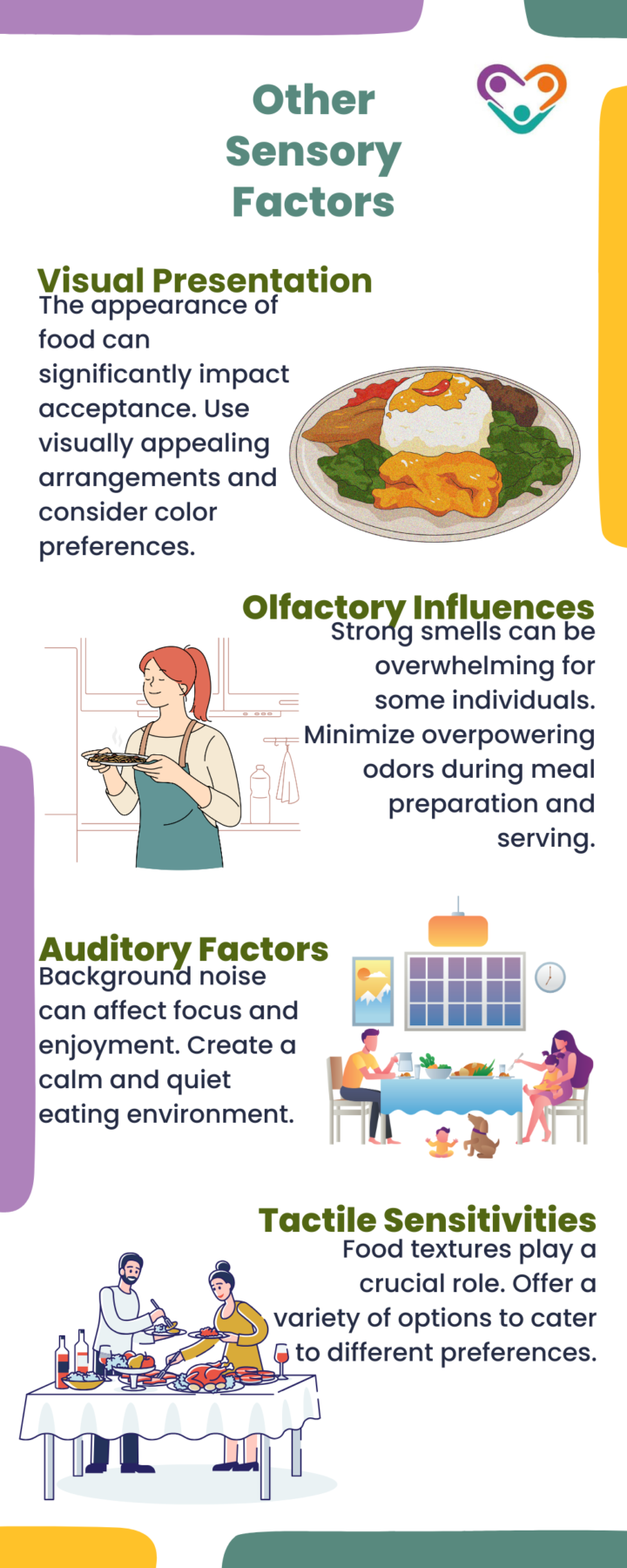The sense of taste, or gustation, is a crucial component of our sensory world. For individuals with Autism Spectrum Disorder (ASD), the gustatory system can present unique challenges and opportunities. Understanding how taste perception differs in people with ASD is essential for developing effective sensory activities.
Understanding Gustatory Sensory Processing in ASD
The typical development of the gustatory system begins in the womb and continues throughout childhood. Infants are born with a fully functional sense of taste, allowing them to differentiate between sweet, sour, bitter, and salty flavors. As children grow, their taste perception refines, influenced by both gustatory and olfactory senses.
Individuals with ASD may experience taste differently. Some might be gustatory under-responders, with a decreased sensitivity to taste, seeking strong flavors and constant oral stimulation. Others might be gustatory over-responders, exhibiting heightened sensitivity to taste, leading to limited food preferences and anxiety around new flavors.
Research has highlighted significant differences in gustatory processing among individuals with ASD compared to neurotypical peers. Studies have consistently shown that individuals with autism experience difficulties in identifying sour and bitter tastes. While their ability to detect sweet and salty flavors is similar to neurotypical individuals, their overall taste perception is often altered.
Furthermore, the sense of smell, closely linked to taste, is also impacted in individuals with ASD. They often exhibit difficulties in identifying common odors, suggesting a broader chemosensory processing difference. This interplay between taste and smell significantly influences overall flavor perception and can contribute to food-related challenges.
The reasons behind these gustatory differences in ASD are complex and not fully understood. However, it is believed that atypical sensory processing, common in autism, plays a significant role. This may involve differences in how the brain interprets and responds to taste and smell stimuli. Additionally, underlying neurological factors and genetic influences might contribute to these variations.
Tailoring Gustatory Sensory Activities
Understanding the unique sensory experiences of individuals with autism is crucial for creating supportive environments. When it comes to taste or gustation, these differences can significantly impact daily life.
Identifying Gustatory Sensory Preferences
Individuals with autism often exhibit distinct gustatory sensory preferences. These can be categorized into two primary groups:
- Gustatory Under-responders: These individuals may have a decreased sensitivity to taste, seeking out strong flavors and textures to stimulate their senses. They might enjoy spicy foods, constantly chew on objects, or have a varied diet to compensate for reduced taste perception.
- Gustatory Over-responders: On the opposite end of the spectrum, individuals with heightened taste sensitivity may have limited food preferences, experience anxiety with new flavors, and be particularly sensitive to food textures and temperatures.
Recognizing these preferences is the first step toward creating tailored sensory experiences.
Creating Supportive Gustatory Environments
By understanding these differences, we can implement strategies to enhance the gustatory experiences of individuals with autism.

For Gustatory Under-Responders
Gustatory under-responders can lead them to crave intense flavors and textures to stimulate their sensory systems. To create a more engaging and enriching experience, we can introduce a variety of strategies that cater to their specific needs.
- Expand flavor profiles: Introduce a variety of tastes gradually, allowing the individual to explore and develop new preferences. Experiment with different cuisines, spices, and herbs.
- Offer sensory-rich foods: Provide foods with diverse textures, such as crunchy, chewy, and smooth options. Encourage exploration through finger foods and interactive mealtimes.
- Stimulate oral senses: Offer oral motor tools to provide additional sensory input. Consider incorporating crunchy or chewy snacks into the diet.
- Create a stimulating environment: Enhance the dining experience with engaging visuals, sounds, or tactile elements.
For Gustatory Over-Responders
Individuals with autism who are gustatory over-responders experience taste with heightened sensitivity. By applying these strategies, we can introduce new gustatory experiences gradually, building tolerance and reducing anxiety.
- Establish a predictable routine: Create a consistent mealtime structure to reduce anxiety and increase comfort.
- Create a calming environment: Minimize distractions, such as noise or strong odors, during mealtimes.
- Introduce new foods gradually: Use visual support and positive reinforcement to encourage trying new flavors.
- Offer sensory-friendly options: Provide familiar food choices and explore alternative textures or presentations.
- Address oral sensitivities: Consider desensitization techniques or oral motor exercises to improve tolerance to different tastes and textures.
Additional Sensory Considerations
Beyond taste, other sensory factors can influence food preferences. Consider these aspects when creating sensory-friendly mealtimes:

By carefully considering these factors and tailoring activities to individual needs, we can create positive and enjoyable gustatory experiences for individuals with autism.
Importance of Collaboration
Effective gustatory sensory support requires a collaborative approach involving individuals with autism, their caregivers, educators, and healthcare professionals. By working together, a comprehensive understanding of sensory needs and preferences can be developed.
Caregivers can provide invaluable insights into an individual’s sensory history, while educators can observe and document responses in different environments. Open communication and shared decision-making are also essential for creating personalized sensory plans.
Regular evaluation of strategies ensures that the support provided continues to meet the evolving needs of the individual. Collaboration fosters a supportive network, empowering individuals with autism to explore new gustatory experiences and build confidence in their abilities.
Golden Care, a leading provider of ABA therapy and autism services in NYC, Indiana, New Jersey, Georgia, and Florida, offers high-quality, individualized support to help individuals with autism thrive. Our experienced team also provides ongoing guidance to maximize outcomes.
Contact us today to learn more about how we can support your child’s sensory journey!



